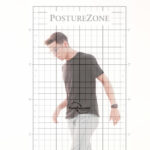Importance of Interoception in Neuromusculoskeletal Care
The Importance of Interoception in Neuromusculoskeletal Care
Teaching people to listen to their body should be an integral part of all neuromusculoskeletal (NMS) care. In other words, NMS pros should educate people to strengthen their interoceptive senses.
In 2021 the National Institutes of Health (NIH) released a consensus paper defining interoception as “the representation of the internal states of an organism, and includes the processes by which it senses, interprets, integrates, and regulates signals from within itself”1. To put that another way, interoception is the neurologic perception of an organism’s internal function. It’s the meeting place of our autonomic, somatic and visceral nervous systems.
Interoceptive awareness is being able to sense what’s biologically happening inside your body. From having an intuitive gut feeling to how we get teary eyed at a movie, research shows interoception is a major factor contributing to the uniqueness of human thought and cognition.
A recent meta-study on chronic pain2 found that weak interoceptive accuracy reflects an impairment in accurately detecting, and accurately reacting to, the body’s inner signals. For NMS as well as psychologic conditions, higher interoceptive sensibility was associated with less severe symptoms, less frequently.
Specifically, people who are more connected to their body’s inner feelings have less pain, less often.
Helping Patients Improve Interoceptive Awareness
As NMS professionals, we are in a unique position to help our patients improve their interoceptive awareness. After all, we are the professionals who actually touch people where they feel the pain. By helping people connect with their body’s perceptions of pain, we can set the stage for authoritative credibility.
One way to improve interoceptive awareness is by focusing on posture. Humans are obligate bipeds, the only mammals designed to balance on two feet as their primary mode of locomotion.
However, we’re rarely aware of the patterns of muscles we use to accomplish that feat. Is my body twisting, leaning or otherwise distorting? Am I listing to the left and straining my knee with every step? Over time, subtle errors of awareness and biomechanic control contribute to asymmetric joint stress, uneven muscle strain, and often pain.
Your body thinks in whole motions, not individual muscles.
People don’t think about their head tilt, or it alignment, much less consider orientation in space of their torso. Awareness of subtle shifts are unconscious…until attention is focused.
When someone is asked to physically mark their perception of subtleties of their body, attention is turned inward, focusing on interoceptive sensory input.
 The Upper Body Posture Awareness Questionnaire
The Upper Body Posture Awareness Questionnaire
The Upper body Posture Awareness Questionnaire (uPAQ) is a tool for NMS pros to build interoceptive posture awareness (Click here to download). Created by posture expert Dr. Steven Weiniger for Posture Month 2023, the uPAQ is designed to educate people about their interoception, and create a remembered experience by focusing their attention on subtleties of their physical posture.
A PosturePractice is about building an in-office experience on each visit. Which is why on it’s own or with a posture picture, at the beginning of care or periodically for wellness care, the uPAQ a foundation for NMS visits that people remember.
Click here to download the uPAQ and find out more about strengthening somatic interoception with posture.
1 Chen, W. G., Schloesser, D., Arensdorf, A. M., Simmons, J. M., Cui, C., Valentino, R. et al. (2021). The Emerging Science of Interoception: Sensing, Integrating, Interpreting, and Regulating Signals within the Self. Trends Neurosci, 44(1), 3-16.
2 Locatelli et. al. (2023). What is the role of interoception in the symptom experience of people with a chronic condition? A systematic review. Neuroscience & Biobehavioral Reviews, 105142.





















